
At the beginning of the year, Drift launched a survey to assess the state of marketing talent, technology and trends.
130+ marketing leaders answered. And this month we launched the full report.
I won’t lie, before launch, we had some concerns. Would these insights still be relevant to the issues facing marketers today in a COVID-19 world?
To our surprise, yes. They’re more timely than ever.
While you can check out the full report here, I want to focus on one stat in particular:
62% of respondents said bandwidth was the single greatest challenge facing their departments.
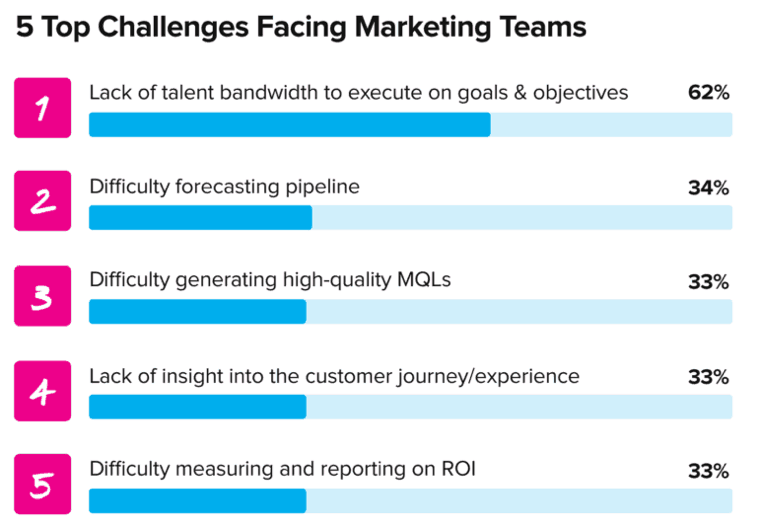
From marketing teams that have gone totally remote and shifted strategies, to those teams whose headcounts were unfortunately reduced due to the economic impact of COVID, bandwidth is most definitely a challenge right now.
But, as the data shows, it was also a problem for marketers long before COVID.
Here’s the thing though: When looking to solve a big problem, you have to dig into all root causes.
So why are marketers stretched so thin? And what can be done to solve this problem in our current climate – while also scaling for the future?
Let’s find out.
Why are Marketers Stretched So Thin?
Marketing as a discipline has changed a lot over time. And that isn’t a bad thing! But it does mean that modern marketers must wear multiple hats to do their jobs effectively.
?This, coupled with a growing martech stack and responsibility for generating revenue, and it’s easy to see why pressure on marketers is mounting.
More is Being Asked of Marketers
I’m a senior manager on the content marketing team here at Drift – a role that didn’t exist 15 to 20 years ago.
But I wouldn’t exactly call myself a “writer.” (Unless it’s a family member asking at Thanksgiving. In that case, I write books, not eBooks, and articles, not blogs.)
While writing is a big part of what I do, my responsibilities extend further: Research, analysis, reporting, systems use, and more make up my day-to-day. And I’m not alone in this skill diversity. I’m sure other marketers dread that casual “what do you do again?” at family gatherings, just as much as I do.
It’s no longer enough to say “I’m a marketer” or “I’m a writer”. There are a lot of skills that make up the marketing field. And that means a growing list of responsibilities.
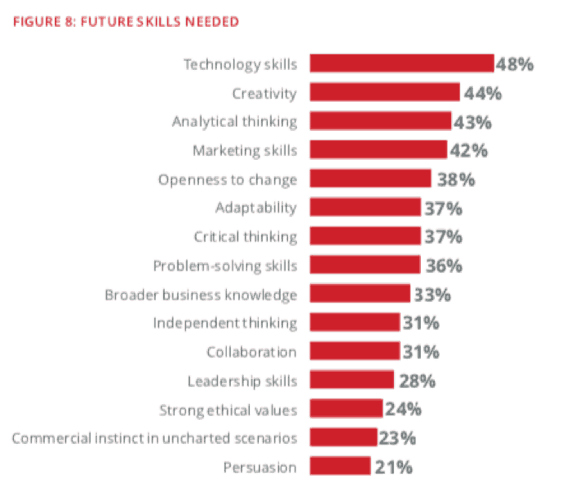
Source: Future Skills Needed, Perpetual Evolution Report, The Economist Group
More Martech Means Greater Technical Expertise
Tech can be a gift and a curse for marketers. A gift because it helps manage bandwidth. A burden when it introduces more challenges than solutions.
Similar to the previous point, more and more technologies are being used to support marketers in their day-to-day.
As a result, job roles are asking for greater technical expertise from applicants to manage and use this martech. Even for marketers that come in with the technical expertise needed, there are no guarantees that a new technology won’t come along and throw them for a loop and require more hours of learning. Plus new tech means more resources to help manage those tools.
(We’ll dig deeper into how martech audits can help identify the tools you need later in this article.)
Balancing Output Expectations with Budget Realities & Headcount
Is your team set up for success or are they poised to fail against unrealistic expectations?
If you’ve ever been in a toxic startup situation, the scenario I’m talking about might sound familiar. Sometimes expectations are out of whack with the resources you’ve been given.
And that’s not to say that a bit of elbow grease and manpower isn’t necessary every once in a while. But this isn’t a sustainable strategy. It’s a temporary solution to a current problem.
For marketing to be seen as successful, marketing leaders must be able to manage expectations based on the people and technology at their disposal.
Greater Scrutiny & Multiple Stakeholders in the Boardroom
In a report from Drift, G2 and Heinz Marketing, CMOs described the challenges they faced in the boardroom and the impact those had on marketing’s success.
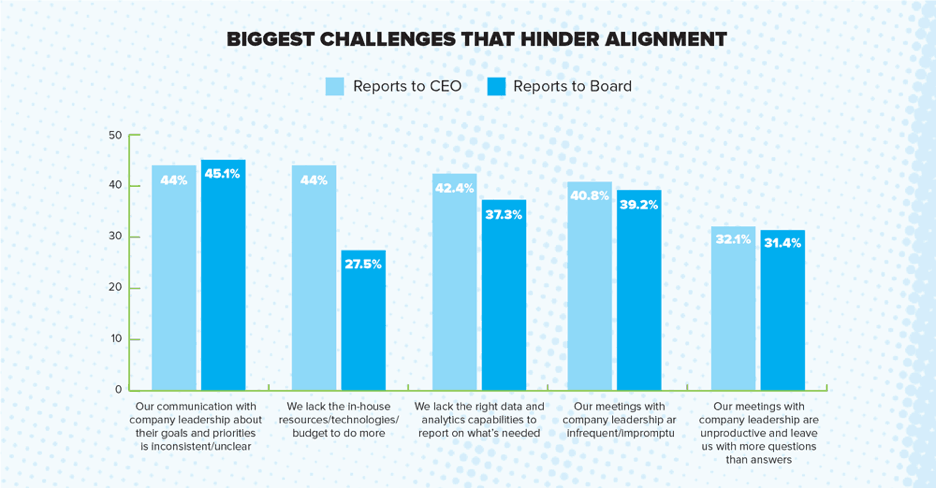
CMOs have one of the shortest tenures in the C-Suite. Looking at the challenges shown in the graph above, it’s easy to see why: Communicating marketing’s value has never been more difficult.
This helps explain why some teams may lack the budget needed to execute on goals or why there’s a lack of buy-in for marketing’s vision.
6 Ways to Help Improve Marketing’s Bandwidth (Now & in the Future)
From changing job requirements to managing expectations, marketers have a lot on their plate.
But we’re a creative bunch – and there’s a number of ways teams can alleviate bandwidth pressures.
Here’s how to get started today ?
1) Align Your Goal with Sales & Make it Your Mantra
If your team is suffering from a lack of bandwidth, your first instinct should be to hyper-focus on what matters most. For marketing, that’s creating opportunities for sales.
But many marketing teams struggle to align with sales on this and other goals.
Personally, my favorite answer to the marketing-sales dilemma comes from Drift CMO, Tricia Gellman:
“Determining what measurement of success to align your teams around may depend on your organization. But I’ve always found that bookings are a great goal for marketing and sales to get behind. That said, if this success metric isn’t easily adopted by your marketers, the next best goal should be pipeline generation. After all, both departments are growth-oriented and customer-focused. ”
Bookings and pipeline generation are something every single marketer and salesperson should feel accountable for. Once marketing and sales leaders can align their teams around these goals, it becomes easier to see what activities are and aren’t working towards the big picture.
2) Turn the Big Picture into Tactical Steps with Integrated Campaigns
We’re big on integrated campaigns at Drift. Once we made the shift to remote work, they became even more important to keeping everyone on the same page and working in lock-step.
Here’s a simple definition of integrated campaigns from the folks at Campaign Monitor:
“Integrated campaigns combine multiple channels such as content, email, display advertising and social media in order to promote a consistent message to a specific audience.”
The image below shows the hierarchy framework we use at Drift. There’s no specified number of programs you should run, so find what’s achievable for your team with the resources you have.
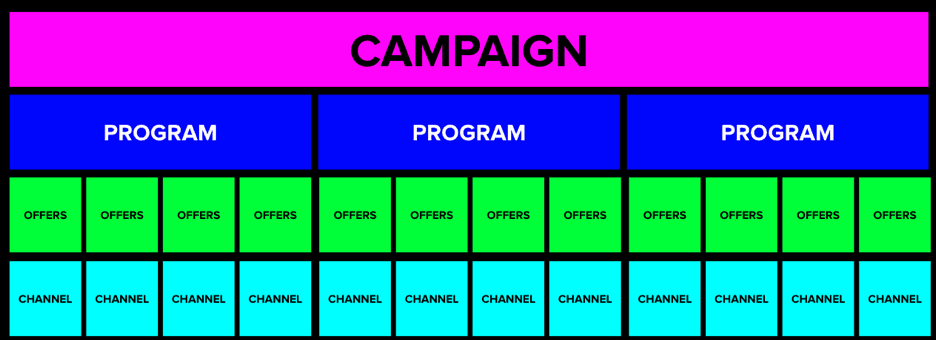
Different marketing teammates execute the layers of an integrated campaign. For example, demand generation creates the programs. Content marketing creates the offers under those programs. Social media marketing and digital marketing share these offers on channels to be consumed by potential buyers.
To help manage our own integrated campaigns we onboarded Asana. With Asana, we’re able to see how the work everyone is doing contributes to the larger campaign.
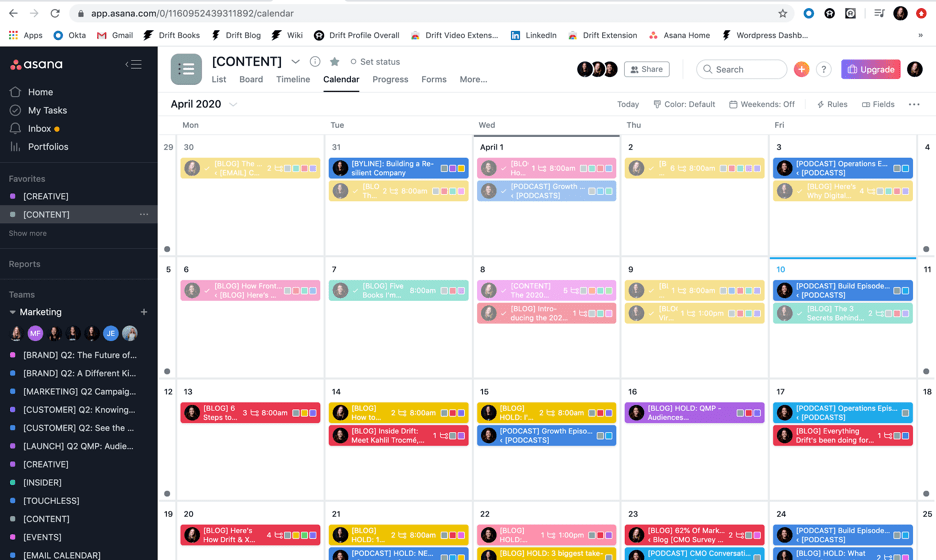
Again, this allows us to scale quickly by improving communication and focusing on critical campaign pieces above all else.
3) Lean on Digital Marketing Plays that Deliver Quick Wins
Digital marketing is more important than ever before. And marketers are doubling down on the digital plays that have proven successful in the past, including:
- Search Engine Optimization (SEO)
- Search Engine Marketing (SEM)
- Email marketing
- Video
- Website conversion optimization
- Content marketing
- Advertising
- Webinars/virtual events
Still, some of these plays require a good amount of bandwidth to get right.
To help, here are some digital marketing tactics we’ve found that require low effort, but yield high returns:
Email marketing campaigns
Sometimes going back to basics is the best strategy. This article digs into four email marketing campaigns that align perfectly with sales to create quick wins: closed-loop campaigns, win-back campaigns, wake the dead campaigns, and closed-won campaigns.
Webinars
Webinars are great for a number of reasons:
- They capture an audience’s attention in real-time
- They are additional collateral to promote post-recording
- They are ideal lead-share opportunities for you and your partners
- They are great lead magnets for sales
Content marketing
Now is the time to invest in revamping your content marketing strategy. The good news? There are a ton of tools available to help you do it – from Google Analytics to Ahrefs to SEMrush. Mark Kilens, Drift’s VP of Content, Community & Learning, has a great post on why content marketing is critical to helping customers and buyers right now.
Website optimization
Never has there been a more important time to streamline your website experience. It’s the foundation of your buyer experience. Unfortunately, we’ve all seen a bad B2B website. You know the ones: hard to navigate, difficult to find answers and impossible to talk to another human. A poorly designed website is like throwing money away. Don’t let that happen to you.
PPC/advertising
If you have the budget for it, PPC can greatly extend the reach of your content marketing efforts. But, you don’t have the time or resources to waste on a bad digital advertising strategy. The article above offers best practices for improving the ROI of your next PPC campaign.
4) Make “Work Smarter, Not Harder” the Law of the Land
Simplify. Focus. Repeat. That’s Drift’s mantra for the year, and it leans on an old saying that you’re likely familiar with: “Work smarter, not harder.”
I’m going to take a guess here and say your marketing team has a library of resources – from eBooks to webinars to videos to one-sheeters – at their disposal. And that content is most likely still incredibly valuable to your audience.
So why reinvent the wheel? Work smarter, not harder is the absolute law of the land if your team is struggling to keep pace. To get started, gather your team together and look at the content you have:
- Identify what assets can be used in your current campaign strategies: Not every integrated campaign needs a ton of new content. Look at the resources you have first and see if they fit into the narrative.
- Look at your bigger assets & break them down: Whether it be ebooks, reports or videos. How can this content be broken into smaller, digestible pieces? Come up with 3 to 4 ideas for each big content piece.
- Use content syndication for popular assets: Want net new leads? Content syndication is great for capturing new audiences. Experiment with your highest-converting content first.
5) Avoid Martech Waste & Focus on Tools that Help
Marketing teams can easily get bogged down with technology they don’t need. In fact, Gartner found that the average marketing team only utilizes 58% of their martech stack’s potential.
If vendors haven’t done a good enough job showing their value, it’s time to bid them farewell.
There’s a great quote from Drift’s Marketing Leadership Benchmark Report that summarizes how leaders should approach their martech stack to ensure less waste and more results:
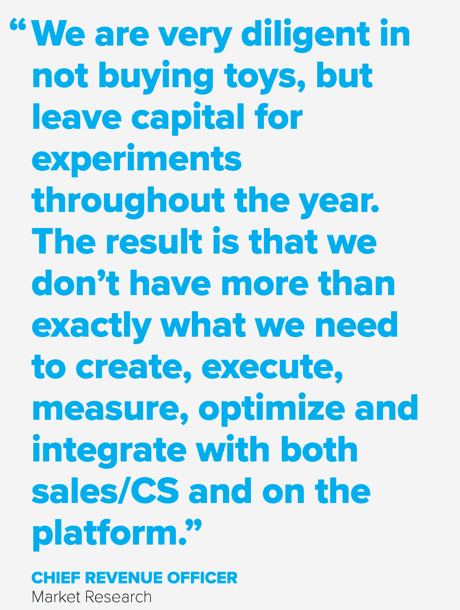
Connect with your ops teams and start auditing your tech stack. Look at the tools that can help your team better automate certain tasks. Lose the tools that aren’t being used well or take more time to manage than they help.
6) Encourage Learning During Company Hours
It’s an ugly truth. But it’s a truth:
Employees are afraid to learn during company hours.
And this is a real problem for marketers who are being asked to do unfamiliar and technical tasks.
Learning-on-the-job will only get your team as far as the expertise you have in-house. If this is the only education companies are willing to give their employees, then they’re in danger of stunting innovation and growth.
And let me be clear: Giving your employees the budget to take a certification or online course isn’t enough.
You owe them time. Not non-working hours time. That time is theirs to spend with their family, unwind from the workday, and take care of their mental health. Instead, employees need time to learn during work.
For too long companies have offered personal development opportunities to employees, but offered little room for them to learn these skills at work. And given that more is being asked of marketers from these companies, it’s a catch-22.
Managers should make a conscious effort to encourage employees to learn during working hours in exactly the same way that they push campaign deadlines. Not only will this create a stronger, smarter marketing team, but it will also allow your team to scale. That’s why at Drift, one of our leadership principles is “always be learning.”
Final Thoughts
To all the hard-working marketers out there, we salute you.
Keep fighting the good fight and we’ll make it through this uncertain period.
In the meantime, we hope these strategies help you and your team scale more effectively now and in the future.






